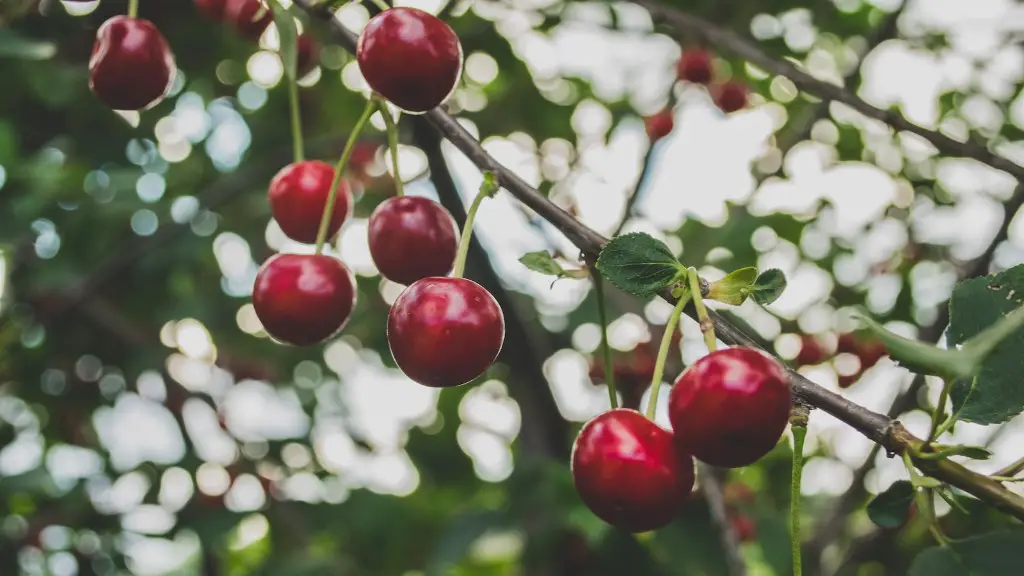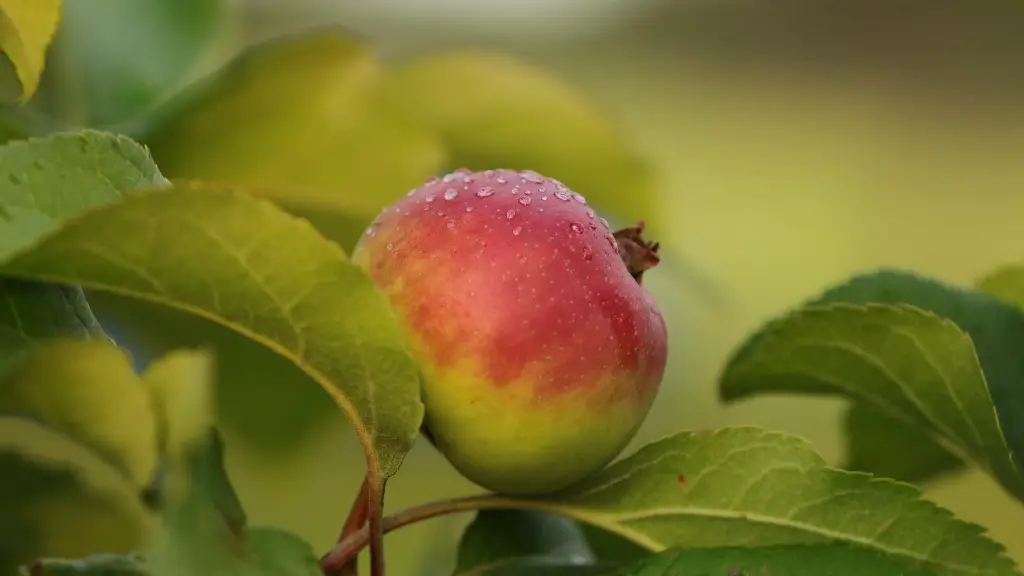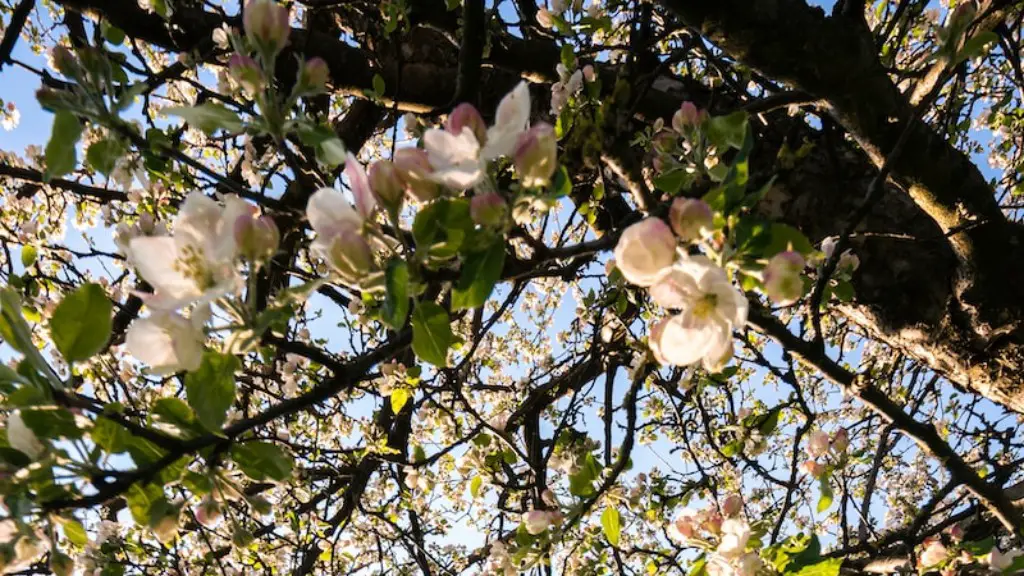Overview of what influences a cherry tree to grow
The growth of a cherry tree depends on a range of factors. These factors can include the soil condition, the climate, water availability, and the variety of cherry chosen. Trees also need adequate space, in order for the branches to have access to light, and for the roots and trunk to have room for growth. Good fertilization and pruning practices are also vital for building a healthy, long-lived tree.
Cherry Seedlings
Cherry tree seedlings can be grown from seeds or from cuttings. Growing a cherry tree from seed requires patience and knowledge, as cherries do not germinate easily. However, this method is much less expensive than purchasing saplings from the nursery. When growing from seed, a careful eye and frequent checking is important to make sure the seed is in the proper growing environment. It is also important to select a variety of cherry tree that is suitable for the particular region.
The first step in germination is to take mature cherries and remove each seed from the pulpy center. They should be washed with water to remove the pulp, then placed on a wet towel, air-dried and set aside to dry for a few days. Then, bury the seeds 3-5 cm weel-drained soil with good sun exposure. Finally, water the soil until moist. Germination may occur with a few weeks or could be delayed, depending on the conditions.
Cherry Cuttings
Growing a cherry tree from a cutting is a much simpler process than from a seed. The cutting should be taken from a current, healthy cherry tree that ideally is no more than two years old. With clean garden shears, make cuts at an angle between 5 and 10 cm long. There should also be two leaves or a couple of sets of married leaves at the tip of the cutting.
After the cutting is prepared, it should be dipped for about 20-30 seconds in a rooting hormone that is specific for woody cuttings. This step is important so the cutting cells will form roots. Next determine the correct soil, the medium should be moist and well-draining and acidic. Place the cuttings in the soil, making sure to keep the tip of the cutting pointed up. Cover with a plastic bag to keep the humidity high. To keep up the humidity and encourage rooting, spray the soil and the leaves with water twice a day. The cuttings should be checked often, ideally every two weeks, to check for any signs of rooting.
Other Requirements
Once the cherry tree has taken root and the seed or cutting is ready to be planted in its permanent spot, there are certain conditions that must be met in order to ensure success. Fertilization must be done in order to provide essential nutrients. The best way to fertilize is to use organic material such as compost.
When it comes to soil, it is important to ensure good drainage and to also check pH levels. The soil should not be too acidic, it should be between 5.5 to 7 pH. It is important to avoid over-watering, as this can cause a build-up of stress for the tree.
Lastly, the cherry tree should be pruned each year. It is a good idea to prune the lower branches first, in order to create a strong scaffold for the spreading canopy provided by the fuller branches of the top. Also, pruning a cherry tree keeps the size and shape of the tree in check. As a result, the tree can remain healthy and can provide shade and fruit for many years to come.
Harvesting
The harvesting of cherries varies depending to the tree and variety. Generally, cherries are ready to be harvested when they are ripe, plump and firm. Most fruits will separate easily when ready. The best way to test is to gently pick or pull the cherry off the branch. Also, check the color; cherries should be fully red, dark purple or yellow, depending on the variety.
Storing
Cherries can be stored in the refrigerator or on the counter. Store in an airtight container, or loosely wrap in a paper towel. For best results, cherries should be consumed within two to three days of harvesting from the tree.
Cherry Tree Diseases
Cherry trees can suffer from several common diseases. These diseases can include brown rot, bacterial canker, rodent damage and Phytophthora root rot. These diseases can be kept in check by using proper pruning procedures, spraying with organic products and by providing adequate nutrient for the tree.
Pests and Predators
Insects, rodents and bird can damage the cherry tree and its fruit. Common offenders include the Japanese beetle, tent caterpillars, bears and the brown-headed cowbird. To discourage these pests, it is important to clear away any fallen fruit, to use traps and exclusion devices, to frequently monitor the tree and to take preventive measures to reduce the spread of these pests.
Organic Pest Control
Organic pest control is the best way to control pests and disease in the garden without using chemical substances. Homemade insecticidal soap, horticultural oil, garlic and hot pepper sprays, and ultra violet light traps can all be used to help keep the garden safe from insect infestations. Additionally, beneficial insect attractants can be included such as fennel, dill and parsley.
Winterizing + Maintenance
In order to keep the tree healthy, it is important to winterize the cherry tree. Winterizing the tree includes removing dead and diseased branches and pruning the tree. It is also important to fertilize the tree in the spring and in the fall when the tree is dormant. Mulching or composting the area around the tree and keeping the soil rich in organic matter is also beneficial.
Conclusion
Growing a cherry tree from seed or from cutting is not a complicated process, however it does require knowledge and care. Good soil and sun exposure, proper pruning and winterizing of the tree, as well as organic pest control and fertilizing are all essential for creating a healthy tree that can bear fruit for years to come.


